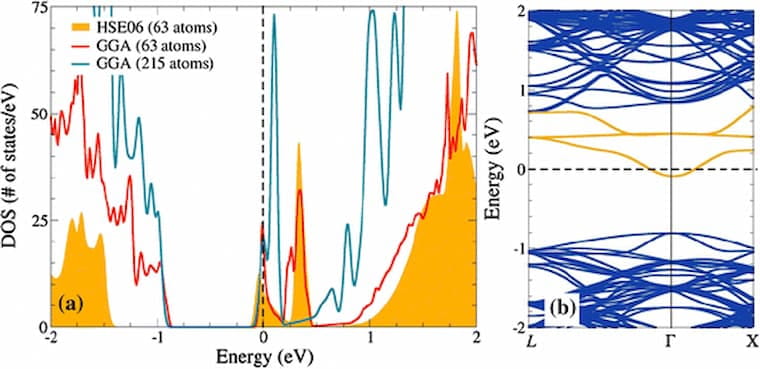05. Native point defects in binary InP semiconductors.
R. Mishra, O. D. Restrepo, A. Kumar, W. Windl, J. Mater. Sci. 47, 7482 (2012).

Native point defects in binary InP semiconductors.
R. Mishra, O. D. Restrepo, A. Kumar, W. Windl, J. Mater. Sci. 47, 7482 (2012).
We present a holistic method to identify stable point defects in InP and the position of their defect states within the experimental band gap using density functional theory. We have calculated the formation energy of the different charge neutral native point defects for both stoichiometric and non-stoichiometric InP by determining the chemical potentials of In and P within the compound correctly from thermodynamic considerations. For stoichiometric InP, we predict phosphorous vacancies and phosphorus antisites to be most probable, among the neutral defects. For In-rich and P-rich compositions, we find indium and phosphorous antisites to be most stable, respectively, when neglecting charges. We then present a careful analysis to identify the defect levels associated with each point defect within the experimental band gap and compare it with existing experiments. By comparing calculations with different cell sizes and with varying band gaps from different exchange–correlation functionals (GGA vs. hybrid functional), we examine the dependence of the defect states on cell size and position of the excited states and analyze their nature and expected position in real systems along with the resulting charges on the defects. Finally, we include a recipe to approximate the Fermi level dependence of the chemical potential of charged defects in binary compounds, allowing calculation of their formation energies. Considering charges, the dominant point defects for stoichiometric InP are +4 and +2 charged indium and phosphorous antisites for Fermi energies <0.4 eV, +1 and +2 charged phosphorous vacancies and antisites for Fermi energies between 0.4 eV and 0.9 eV, +1 and −3 charged indium and phosphorous vacancies between 0.9 and 1.1 eV and −3 and −2 charged indium vacancies and antisites for Fermi energies >1.1 eV, respectively. For non-stoichiometric InP, the respective antisites are constitutional defects in their minimum-energy charge states, depending on the Fermi level.